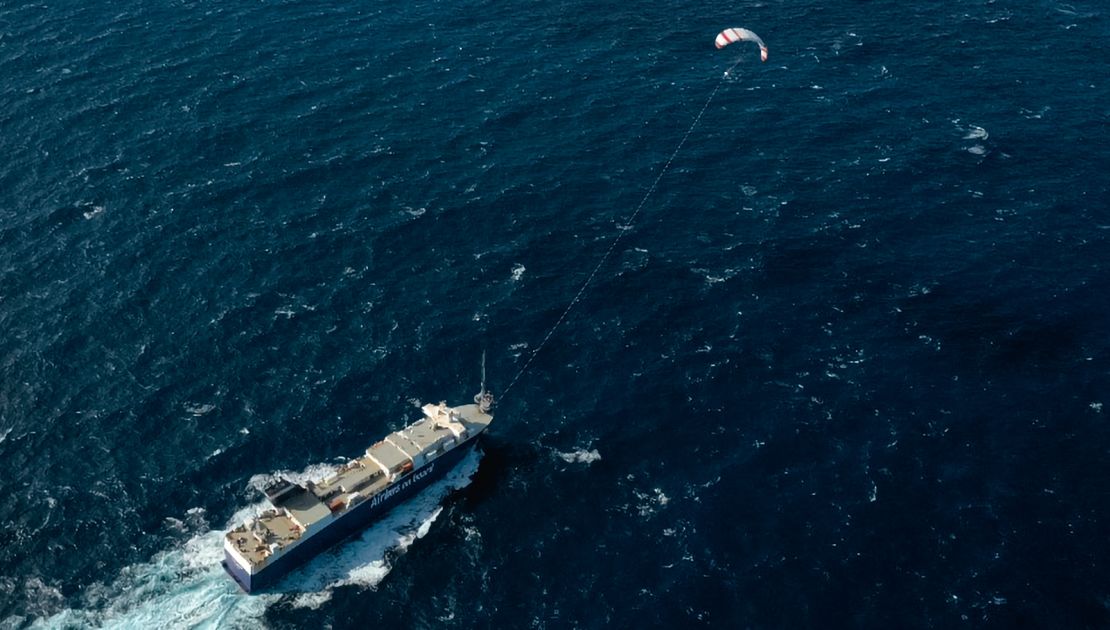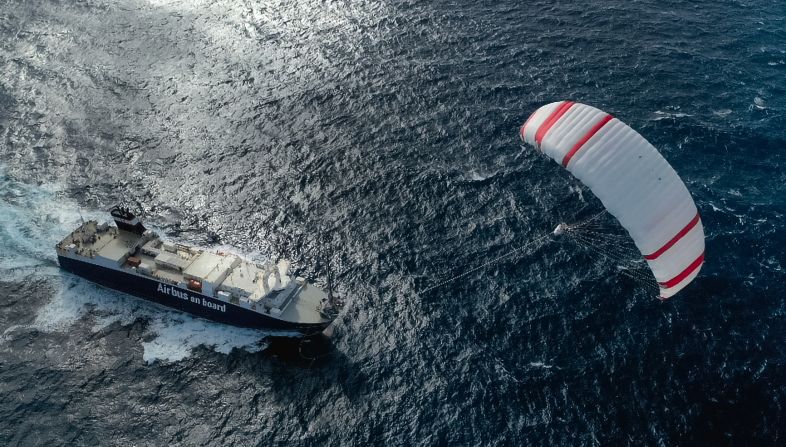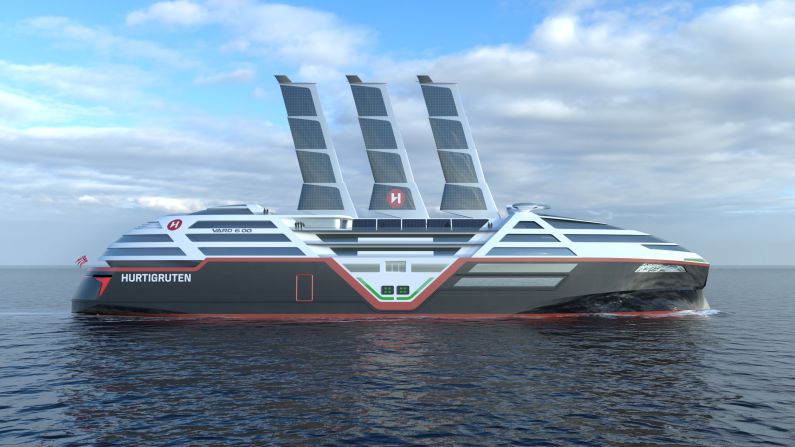You may have seen kitesurfers in action, harnessing the power of the wind to pull them over the sea. Now imagine the same concept applied to a 1,000-square-meter kite, flying 300 meters above the water – only instead of towing a surfer across the waves, it’s helping to propel a colossal cargo ship across the ocean.
That’s the basic idea behind the Seawing, a technology being developed by French company Airseas, which it says could help cargo ships reduce their fuel consumption, and cut their carbon emissions by an average of 20%.
Two engineers at the French aerospace company Airbus came up with the idea in 2016, launching Airseas to further develop the technology. After years of research, they are currently testing the kite on a cargo ship traveling between France and the US.
Powered predominantly by fossil fuels, the shipping industry accounts for around 3% of global greenhouse gas emissions, according to the International Maritime Organization – which is why there’s an urgent need for change, says Airseas co-founder and CEO Vincent Bernatets.
Alternative fuels, such as green ammonia, are in development, but they are expensive and Bernatets argues that it will be decades before the infrastructure is in place to deploy them at scale. “In the meantime, what can we do?” he asks. “That’s where using wind is absolutely paramount.”
While boats have been powered by wind for millennia, the Seawing uses cutting-edge technology to make it fit for the 21st century. The kite is a parafoil, much like a kitesurfer’s, and is launched via a foldable mast, which is also used to retrieve the kite and stow it away when it’s not needed.
Its flight is controlled by autopilot software that operates from a box beneath the kite, which is in turn attached to the ship by a 700-meter-long cable that provides power and sends data to and from the vessel.
A smaller version of the Seawing being tested on a ship crossing the Atlantic Ocean. Courtesy Airseas.
“What differentiates it from other wind solutions,” says Bernatets, “is that the wing is not just pulled by the wind and countered by the ship.” Instead, it flies in figure-of-eight loops, which multiply the pulling effect of the airflow to give what he calls “crazy power.”
“Plus, we fetch the wind 300 meters above the sea surface, where it’s 50% more powerful,” adds Bernatets. The combination “explains why the power is tremendous for a system that is very compact, simple on the bow of the ship, and can be retrofitted on any ship, not just new ships,” he says.
Taking flight
For more than a year, a 250-square-meter version of the Seawing has been tested on a cargo ship chartered by Airbus (which owns a minority stake in Airseas), sailing across the Atlantic. Bernatets says the Airseas team has deployed, launched and flown the kite, and this May, the company announced that the kite had successfully towed the ship. In December, it will begin testing its “dynamic” figure-of-eight flights.
The company has received €2.5 million ($2.7 million) in funding from the EU, and says it already has orders from Airbus and Japanese shipping company “K” Line. It hopes to have the technology fully operational by the end of 2025.

Dr. Richard Pemberton, a lecturer in Mechanical and Marine Engineering Design at the University of Plymouth, in the UK, believes that “there’s an absolutely no question that it’s technically possible” for the technology to work.
He points out that German company SkySails developed and tested a similar kite-based propulsion system for ships more than a decade ago. (SkySails’ parent company recently sold its marine research division to a consortium from the shipping industry.)
“The issue with any wind-assisted shipping, it really comes down to which way is the wind blowing, and where do you want to go?” Pemberton says. “If the wind is directly on your nose, and that’s the direction you want to go, there isn’t a wind system out there that that works well enough for that.”
The Seawing can’t be used when sailing directly into the wind, and to function it needs there to be at least some wind blowing, but Bernatets says it could offer enormous benefits on cross-Pacific and Atlantic routes and any north-south routes — cutting fuel use by 20% for “70 to 80% of the world’s shipping trade.”
Gaining acceptance
Pemberton believes that the biggest challenge is for the technology to gain acceptance in the industry. “I’m 100% (sure) it would reduce emissions pretty significantly, but will it get widespread adoption?” he says.
When it comes to industry acceptance, cost is critical and the price of oil has a big influence. “If you look back over history, whenever the oil price goes up, there is always an interest in wind-assisted shipping,” Pemberton says.
Bernatets agrees that rising fuel prices provide an incentive for ship owners to install the Seawing. Although he wouldn’t reveal the cost of installing the technology, he says it will generally take two to five years for a customer to make back the cost in fuel savings. He adds that savings will become more pronounced as ships transition to green fuels, which are more expensive than fossil fuels and take up more space, because they are less energy dense.
“It’s also a huge enabler for future green fuels,” argues Bernatets. “We allow green fuels to be introduced sooner, both because we save some of the cost, making them more competitive, but also because we reduce the amount of green fuel needed on a ship — which today is a main hurdle, because when you have larger tanks, you can carry less load.”
For Bernatets, that’s all part of his team’s mission. “The fact that we want to contribute to reducing the environmental footprint of shipping, it’s the reason why we’re here — it drives our energy to the next level,” he says.
“We are absolutely convinced that wind is really the next big thing that will radically change and maybe revolutionize shipping.”







